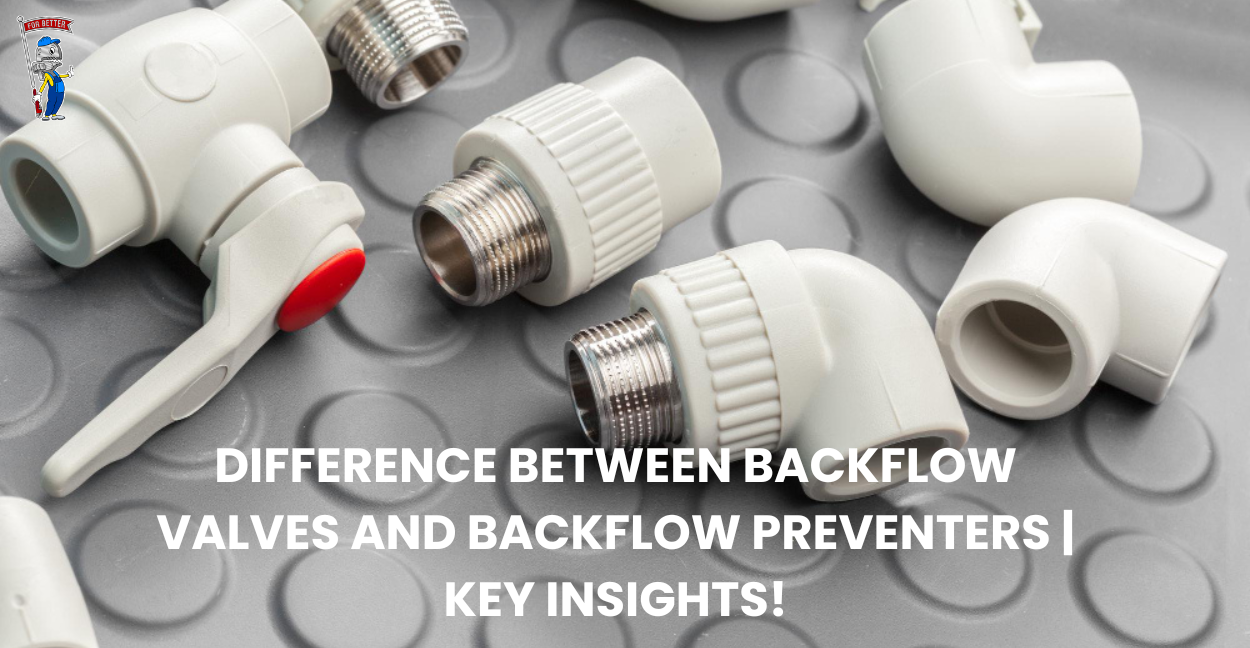Understanding the Difference between Backflow Valves and Backflow Preventers
In the realm of plumbing and water management systems, the terms “backflow valve” and “backflow preventer” are frequently used. While they both serve critical roles in safeguarding water quality and preventing contamination, there are distinct differences between the two. This comprehensive guide aims to elucidate these disparities, highlighting their functionalities, applications, and importance in maintaining water safety standards.
Backflow Valve: A Shield Against Reversing Flow
A backflow valve, often referred to as a check valve or non-return valve, operates on a fundamental principle: preventing the reversal of water flow within a piping system. This device ensures that water flows in one direction only, averting any backflow scenarios that could lead to contamination.
Types of Backflow Valves:
- Swing Check Valve: This type of backflow valve uses a swinging disc to allow water to flow in one direction while blocking reverse flow.
- Ball Check Valve: Employing a spherical mechanism, the ball check valve permits unidirectional flow and obstructs backflow.
- Diaphragm Check Valve: Featuring a flexible diaphragm, this valve opens to allow forward flow and seals shut to prevent reverse flow.
Applications of Backflow Valves:
- Residential Plumbing: Backflow valves are commonly installed in residential plumbing systems to prevent contaminated water from entering clean water supplies.
- Industrial Settings: Industries utilize backflow valves to maintain separation between different water streams, ensuring purity and compliance with regulatory standards.
- Irrigation Systems: In agricultural and landscaping contexts, backflow valves protect irrigation systems from potential contaminants, preserving crop health and soil integrity.
Backflow Preventer: Safeguarding Water Quality
On the other hand, a backflow preventer is a more sophisticated device designed to offer comprehensive protection against backflow incidents. It encompasses various mechanisms and features to effectively thwart backflow and maintain water purity.
Types of Backflow Preventers:
- Pressure Vacuum Breaker (PVB): Utilizes a check valve and an air inlet to prevent backflow, especially in irrigation systems and outdoor water outlets.
- Double Check Valve Assembly (DCVA): Consists of two check valves that provide redundancy and heightened protection against backflow, commonly used in commercial and industrial settings.
- Reduced Pressure Zone Device (RPZD): Offers the highest level of backflow prevention by incorporating multiple check valves and a relief valve, ideal for critical applications such as hospitals and laboratories.
Differentiating Factors Between Backflow Valve and Backflow Preventer:
Below are the key points to understand the difference between Backflow Valves and Backflow Preventers as follows:
- Complexity: Backflow preventers are more complex and sophisticated than backflow valves due to their multi-component design and advanced functionalities.
- Protection Level: While both devices prevent backflow, backflow preventers offer a higher degree of protection, especially in high-risk environments.
- Usage Scenarios: Backflow valves are suitable for basic applications where moderate protection suffices, whereas backflow preventers are deployed in scenarios requiring stringent water safety measures.
In essence, understanding the disparity between backflow valves and backflow preventers is pivotal for maintaining water integrity and safety. While backflow valves serve as essential barriers against reverse flow in plumbing systems, backflow preventers elevate protection standards, particularly in environments susceptible to contamination risks.
By incorporating these devices judiciously based on specific needs and risk assessments, individuals and organizations can fortify their water management practices, mitigate potential hazards, and uphold regulatory compliance. Prioritizing the installation and maintenance of these mechanisms not only safeguards water resources but also promotes public health and environmental sustainability.
Real-world Case Studies: The Crucial Role of Backflow Valves and Preventers in Preventing Water Contamination
Backflow incidents pose a significant threat to water safety, highlighting the vital importance of backflow valves and preventers in safeguarding public health. In this article, we delve into real-world case studies that illustrate the critical role of these devices in preventing water contamination and ensuring the integrity of our water supply.
Case Study 1: Municipal Water System Protection
In a bustling urban area, a municipal water system faced a potential backflow event due to a sudden drop in water pressure. Without adequate protection, this could have resulted in contaminants flowing back into the clean water supply, endangering thousands of residents. However, thanks to the installation of a robust backflow preventer system at key junctions, the threat was swiftly neutralized. The preventers automatically sealed off the compromised sections, preventing any backflow and maintaining water purity throughout the crisis.
Key Takeaway: Municipalities must invest in comprehensive backflow prevention infrastructure to avert large-scale water contamination disasters.
Case Study 2: Commercial Facility Safety
In a commercial facility handling chemicals and hazardous materials, a malfunction in a processing unit led to a backflow incident. Without proper containment measures, this could have resulted in toxic substances contaminating the facility’s water supply and endangering employees and nearby communities. Fortunately, the facility had installed specialized backflow valves designed for industrial settings. These valves immediately halted the reverse flow, containing the contaminants within the facility and averting a potential environmental disaster.
Key Takeaway: Industries handling hazardous materials must prioritize the installation of industry-specific backflow prevention systems to mitigate risks and protect water quality.
Contact Backflow Services Done Right
Ready to protect your property from backflow issues? Our team of certified experts is here to help. Contact us today for a comprehensive backflow prevention assessment and tailored solutions that meet your specific needs. Don’t wait until it’s too late – safeguard your water supply with our trusted services. Get in touch now to schedule your consultation and ensure peace of mind for your home or business.



